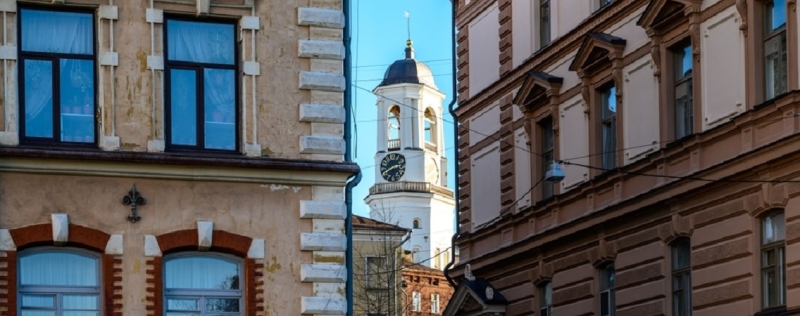
Almost every guide to Vyborg begins with a 13th-century Swedish castle-fortress with a high tower. This is the only surviving monument of Western European military architecture from the Middle Ages in Russia.
But in this ancient city of the Leningrad region there are many other places that are worth including in your route. Typical European buildings here are successfully combined with the romantic atmosphere and medieval history of the Baltic port city. We’ve collected all the most interesting locations in Vyborg.
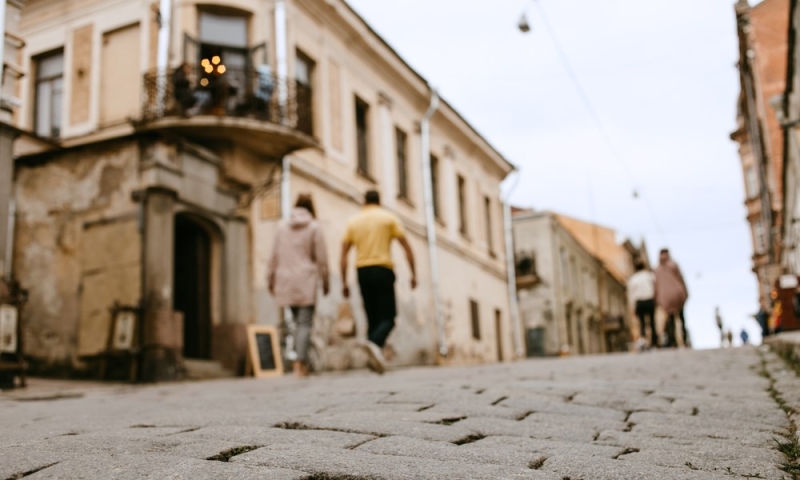
How to get there
The Lastochka departs from the Finlyandsky Station in St. Petersburg to Vyborg several times a day. The journey is a little over an hour, a one-way ticket costs from 530 rubles.
A direct double-decker train No. 160B “Moscow – Petrozavodsk” runs from the capital to Vyborg. The journey takes nine hours, a one-way ticket will cost 1,600 rubles.
In order not to depend on public transport, you can get to the city by car. The journey from St. Petersburg will take about two hours.
Where to stay
- In the Linna Hostel (rating 9.5) from 1,400 rubles* per night.
- In the three-star hotel “Northern Crown” (rating 9.1) from 1,800 rubles* per room.
- At the Nordic country hotel (rating 9.0) from 5,000 rubles* per night.
- In the four-star Victoria Vyborg hotel (rating 9.7) from 5,500 rubles* per night.
Clock tower and observation deck
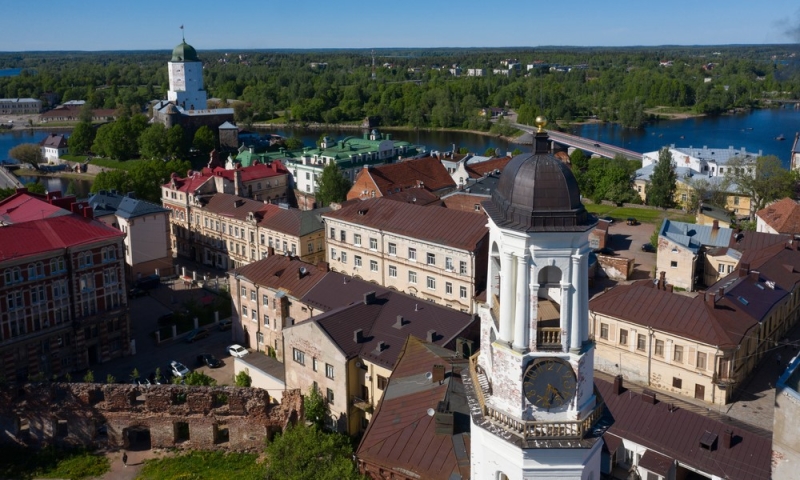
The former bell tower of the Old Cathedral from 1494 miraculously survived the Soviet-Finnish war. Now this building is the dominant feature of the old city. On its facade there is a clock that was last changed in the 19th century. Since then they have been working properly and showing time accurately.
Inside the tower, an ancient spiral staircase has been preserved, leading to an observation deck around the bell. It was donated to the city by Catherine II and weighs 61 tons. You can get there between April and October. From the bell tower there is a panoramic view of the Vyborg Bay, Olaf’s Tower and the buildings of the old city. Tickets are sold only on the VMuseum website. The cost of an hour-long excursion in a group is 300 rubles.
Market Square and streets of the old town
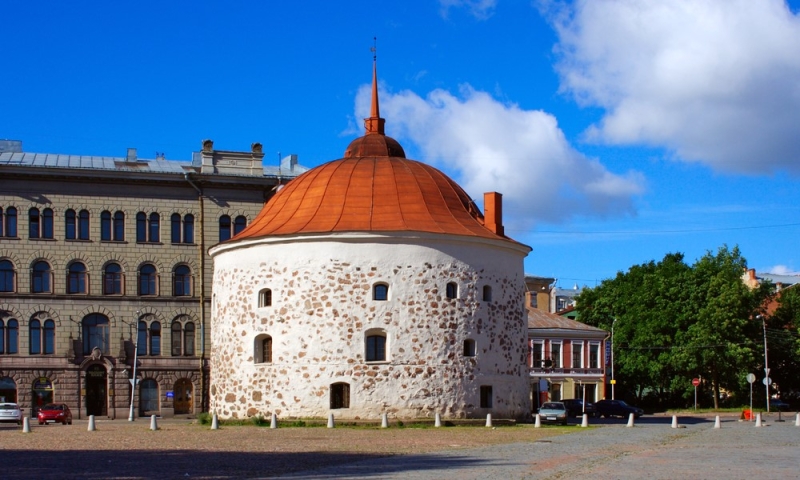
Narrow streets of the old town lead from the Clock Tower to the Market Square. Walking along them is not easy, since steep ascents give way to descents, and under your feet, instead of the usual asphalt, there are paving stones. Along the way there are unique examples of burgher architecture (for example, the Citizen’s House, built in the 16th century – one of the oldest residential buildings in Russia) and atmospheric courtyards with arches.
On the Market Square, several notable buildings have been preserved: a Gothic-style house made of red brick, which houses the city administration, and the Round Tower of the 16th century (the surviving part of the Vyborg fortress). On the opposite side of the square, the central market building immediately catches your eye. It was built according to the design of a Finnish architect at the beginning of the 20th century in the strict style of northern modernism.
Old Town Hall Square
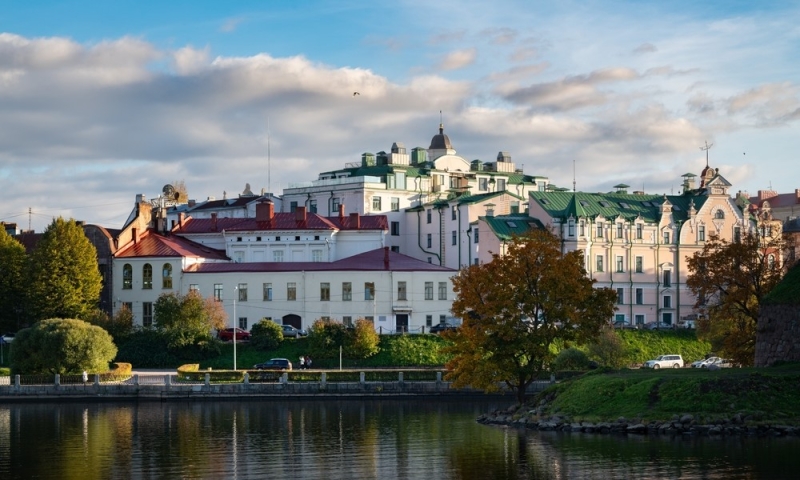
The oldest square in the center of Vyborg appeared in the 14th century – nowhere else in the city is the spirit of the Middle Ages felt so strongly. Even during the Swedish and Finnish periods, folk festivals, fairs and important meetings with speeches by heads of administration took place here. In the small area of the square, many historical objects have been preserved.
Pay attention to the red building of the former Town Hall, built in the Hanseatic style, which is unusual for Russia – you would more likely expect to see this kind of architecture somewhere in Scandinavia or the Baltic countries. Other interesting objects include the house of the merchant Verkut, a former guardhouse and a monument to Thorgils Knutsson, the founder of the Vyborg castle.
Bastion Panzerlax and the Hermitage – Vyborg Exhibition Center
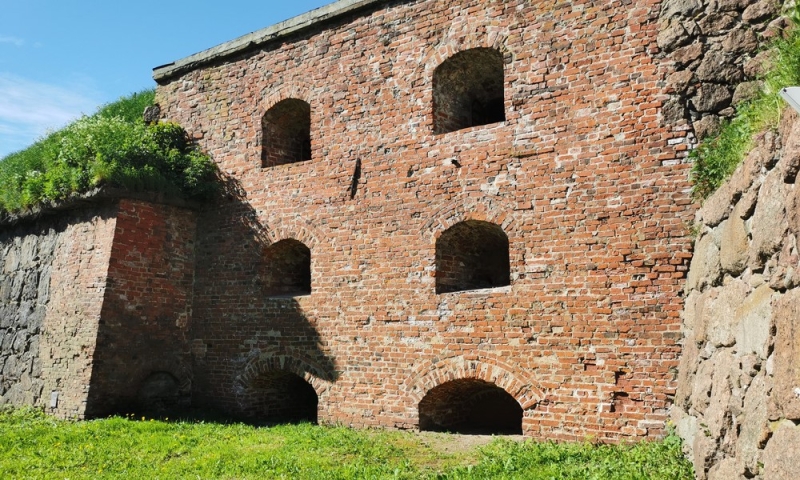
A branch of the St. Petersburg Hermitage operates in Vyborg. One of its buildings is located on a hill – in the past this place was a defensive Swedish bastion. And if you approach it from the Morskaya Embankment, you can see the well-preserved remains of medieval fortifications. The main collections of the Vyborg Hermitage are housed in the halls of the neighboring building, a former art school built in 1930 according to the design of the Finnish architect Uno Ulberg.
The local Hermitage hosts temporary exhibitions of Russian and European art, and exhibits are brought from the Winter Palace of St. Petersburg. It’s also interesting to take a walk around the museum’s courtyard; along the alleys of the green garden there are copies of sculptures by Italian masters. The exhibition center is open daily from 10:00 to 18:00. The ticket price is 300 rubles, they are sold at the center’s box office and online on the VMuseum website.
Alvar Aalto Library
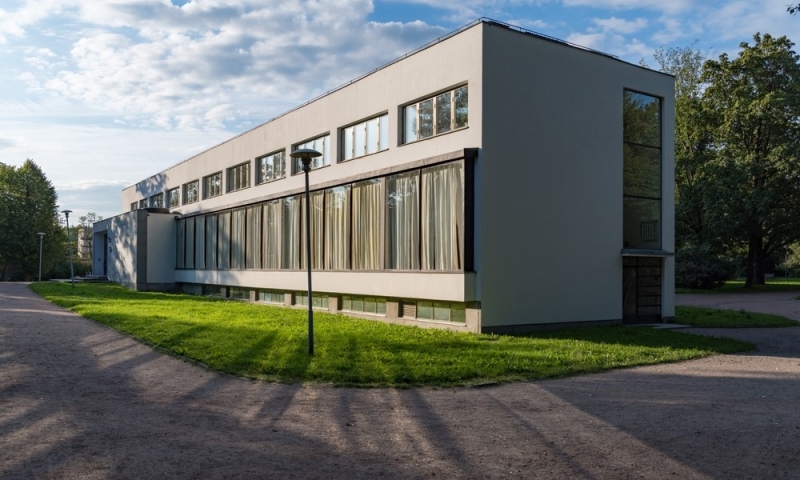
An unusual building in a modernist style, built in the mid-20th century according to the design of the Finnish architect Alvar Aalto. The overall composition of the library looks modern and stands out against the backdrop of the medieval monuments of Vyborg. The innovative building is not only remarkable for its facades, but also for its functionalism inside the premises. For example, a wooden wave-shaped ceiling in an assembly hall for lectures, creating ideal acoustics and the ability to broadcast without a microphone.
Inside, almost everything is made of natural materials: different types of wood, stone and marble. You can get into the Vyborg library for free; you will be issued a temporary library card at the entrance. Several times a day, organized groups of tourists gather here and conduct excursions through the halls of the library. Ticket price: 250 rubles.
Burger’s Estate
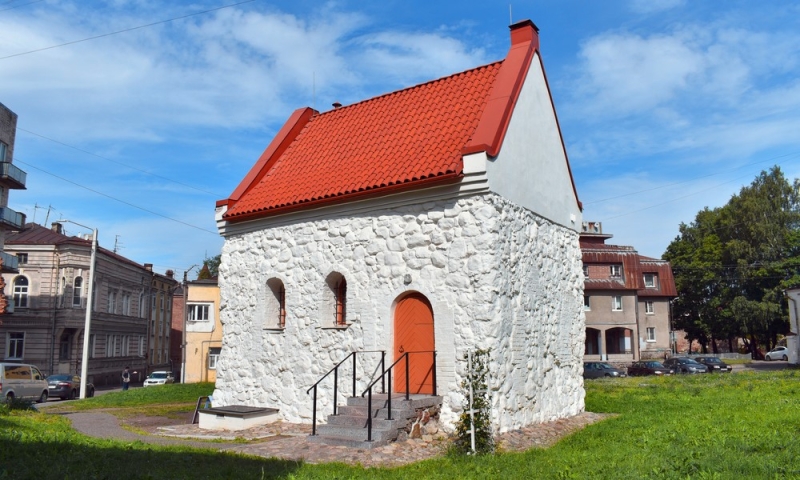
The fortress house is located in the very heart of the historical center of Vyborg, and together with the neighboring two-story carriage house, the Burger Estate represents a complex of medieval buildings valuable for the city. They were built in the second half of the 16th century as a residential building for wealthy owners. Now a private Pretzel Museum has been set up inside the monument, and a restaurant has been opened in the carriage house.
During the excursion at the estate, they will tell you everything about the history of the city and its surroundings, offer delicious pretzels and pour glöga (a traditional Christmas drink from the Scandinavian countries). In the interior rooms you can take a photo in the armor of a medieval knight or the costume of a Scandinavian witch. Visiting the estate is free, and at the entrance you can buy souvenirs and pottery products from Vyborg masters.
Iron House or “Witch House”
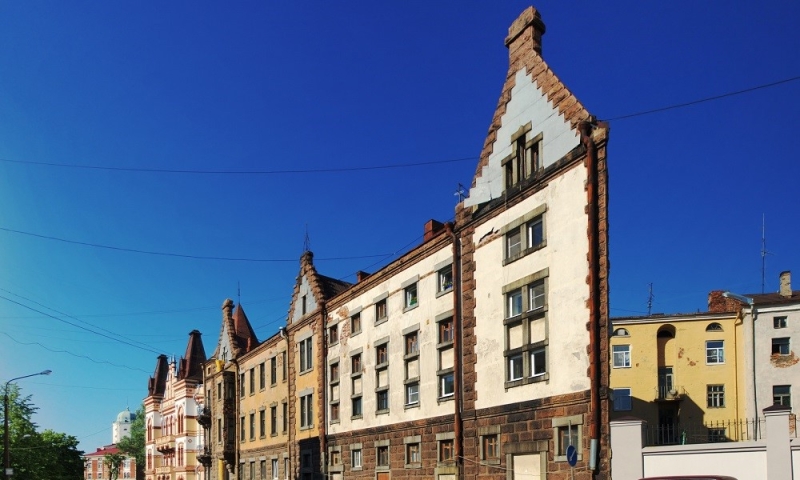
At the beginning of Vyborgskaya Street, the attention of tourists is attracted by an unusual residential building that looks like a small castle. It has interesting architecture and facade layout. From different angles, the house seems completely flat; for a second it may even seem that the building does not have one wall. That is why the people called the building the “iron house”. In fact, all four walls are in place, and the optical illusion occurs due to a very sharp one corner.
The second name of the building is “Witch House”, which is unofficial and arose against the backdrop of city rumors. Former residents claimed that a real witch lived in one of the apartments for a long time. Against the background of this house with a tower on the roof and neo-Gothic decor on the side facades, unusual photographs are obtained, the main thing is to choose the right angle.
Vyborg tram
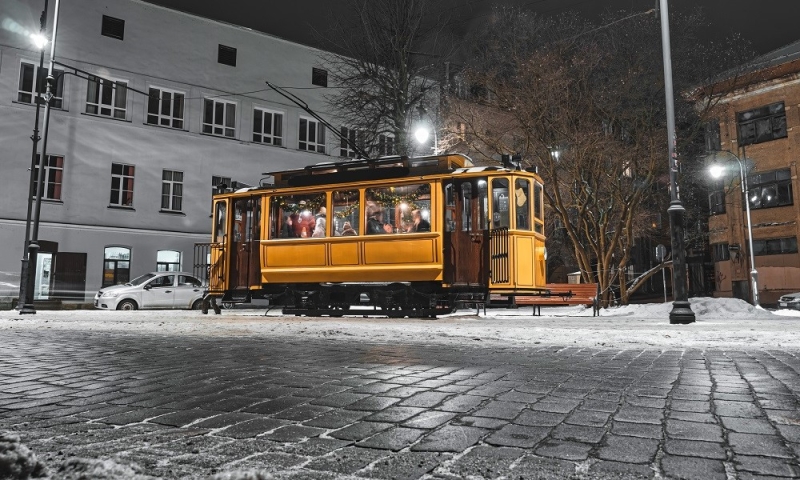
Tram service appeared in Vyborg during the Russian Empire, but was suspended during the Soviet period. One of the reasons is the dilapidated structure and the short length of the tracks (only 12 km). No real trams have survived since then, and as a monument on Teatralnaya Square in 2018, they made a model resembling a real model of a tram made in 1912.
Next to the monument there are two sculptures – a bronze conductor at the front door and a stowaway boy on a hose for coupling cars. A retro coffee shop with four tables for two was opened inside the tram. It’s nice to watch the life of the city from the outside, drink a cup of coffee or hot cocoa.
Salacca-Lahti Bay Embankment
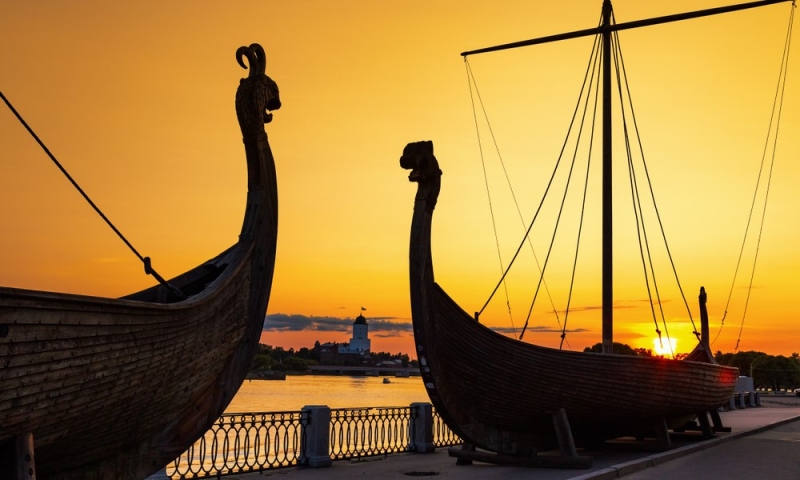
The name of the city embankment is translated from Finnish as “Big Bucket”. When Vyborg became part of Finland, there were berths for yachts and fishing spots here. Now it’s nice to walk in the fresh air, admire the panorama of Vyborg Castle and look at local sculptures.
On the embankment you will meet an anchor, an octopus, a boy with a cat and Viking longships. The latest sculptures are large wooden ships, which were made as replicas for the filming of the Soviet-Norwegian film “And Trees Grow on Stones.” If you stand between two boats, you can take a memorable photo overlooking the Swedish castle and the bay.
Museum-reserve “Park Monrepos”
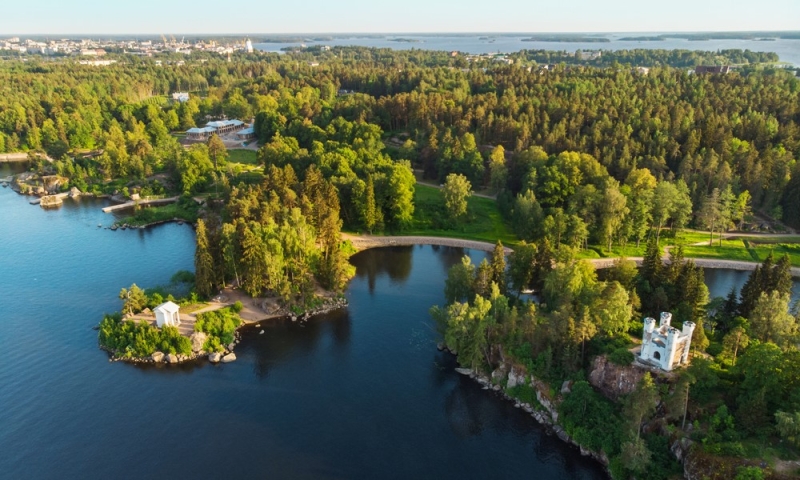
In the 18th century, on the site of the modern park, the estate residence of Baron Andrei Lvovich von Nikolai, president of the St. Petersburg Academy of Sciences, was located. He loved this place very much, so he invested a lot of money in his estate. Colonnades, gazebos, bridges and the main manor house have been preserved here to this day.
The natural park itself is a combination of granite rocks, forest with northern vegetation, Vyborg Bay and park architecture. At the entrance there is an unusual gate in the neo-Gothic style, and on the island of Ludwigstein in the middle of Mon Repos there is a chapel, the family tomb of the Nikolai family. Entrance to the territory of the museum-reserve is paid – 200 rubles.
*Prices are current at the time of publication.

